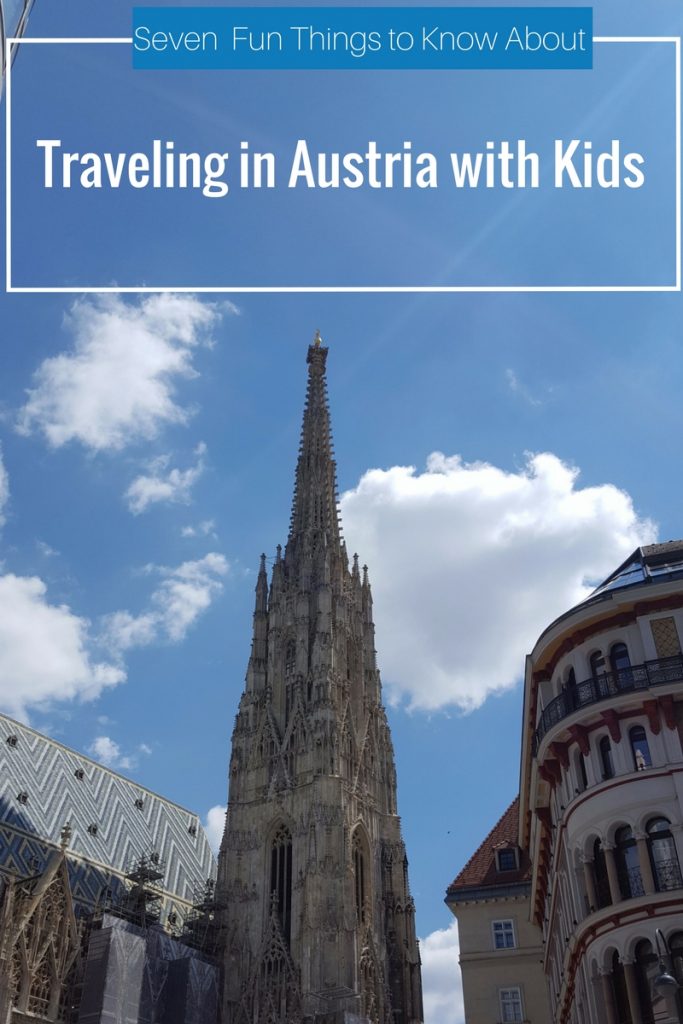
Austria is one of the best places in the world to live with or travel with kids. There are information booths to help families find fun activities, the streets are safe, and the public transportation system is fantastic. There is music, art, delicious food, lakes, and stunning mountains. And there are plenty of guidebooks to help you get around. But, here are a few tips for a great experience that you may not find in a traditional guidebook.
1) In Germany, you may be greeted by “Guten Tag” as you learned in German 101 or even the relativelyinternational “Hallo,” but you should not expect this in Austria. The Austrian most commonly heard greeting is “grüß Gott!” The technical translation is something like “Greet God” but the practical translation is “Good day!” and the Austrian response is often a cheerful “grüß Gott!” in return. I’ve always liked it but some Austrians prefer not to repeat the phrase because of the religious implications as well as some conservative political undertones and to reply instead with Hallo. To me, the greeting also says something intangible like “happy to be in Austria and I understand that this is not Germany.” You can, of course, teach your kids to reply with the traditional grüß Gott or simply Hallo. In any case, it’s good to know what to expect when traveling with kids. Recently, as we boarded what I thought was a Lufthansa flight, the flight attendant said “grüß Gott!” I startled and looked around happily. It was Austrian Air. Perfect!
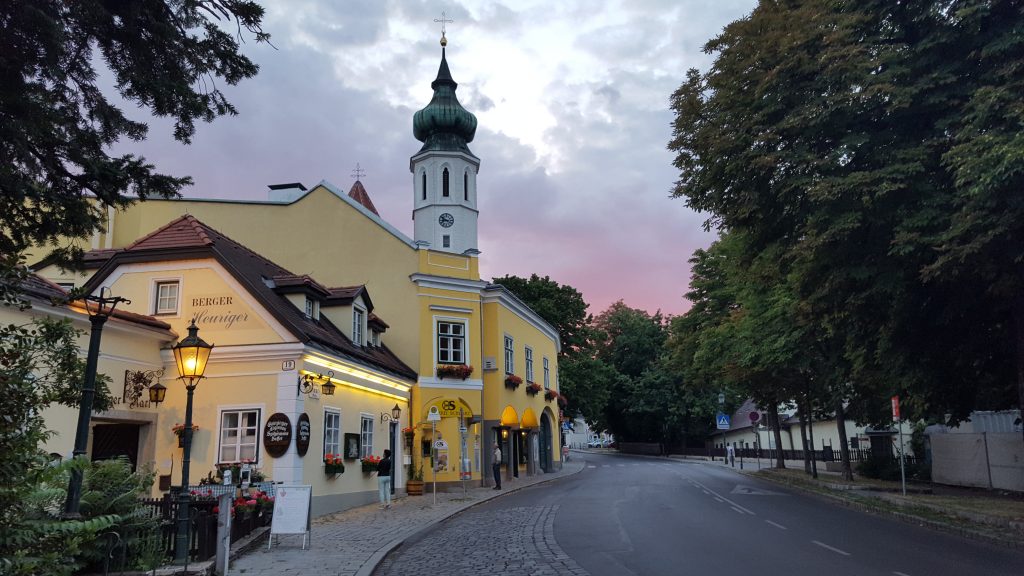
2) The Austrians are, in general terms, mountain goats. If a hike is advertised as “moderate, 4 hours” in the USA, I can generally imagine that the hike is fairly easy and I will finish in a bit under 4 hours, perhaps even with kids. The same label in Austria makes me question my ability to complete the hike at all and I can be certain it will take at least 5 hours even without kids. Imagine that most descriptions of outdoor adventures are written for strong, fit 25 year olds. Look for hikes and opportunities marked “für Kinder” if you want a hike that is good for families.
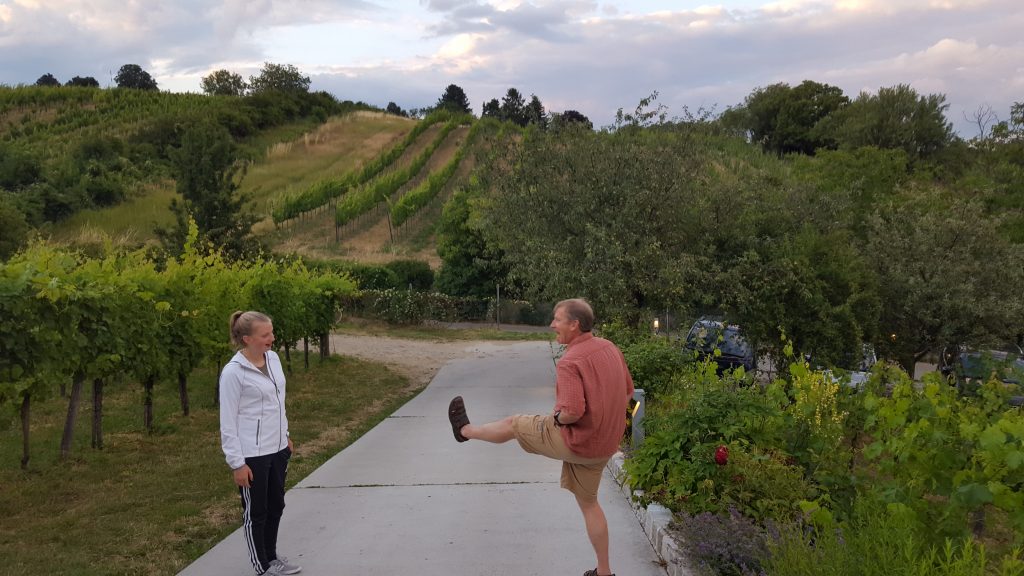
3) The playgrounds, Spielplatz, are stupendous. Simply stupendous. There is no need to search for expensive activities in Austria with kids. Check out the basic and ubiquitous Spielplatz. There is, for example, a bird sculpture that you can fly at the Spielplatz at Schönbrunn palace and a high rope wire at Am Himmel, a relaxing café at the top of the hill above the Grinzing district. But, no need to search for these specific spots, simply wander in the neighborhoods or search Google Earth for a playground near you. Don’t expect the same safety standards as the USA or a lot of parental supervision. Take a look at the equipment first, and help your child enjoy these adventures safely and happily.
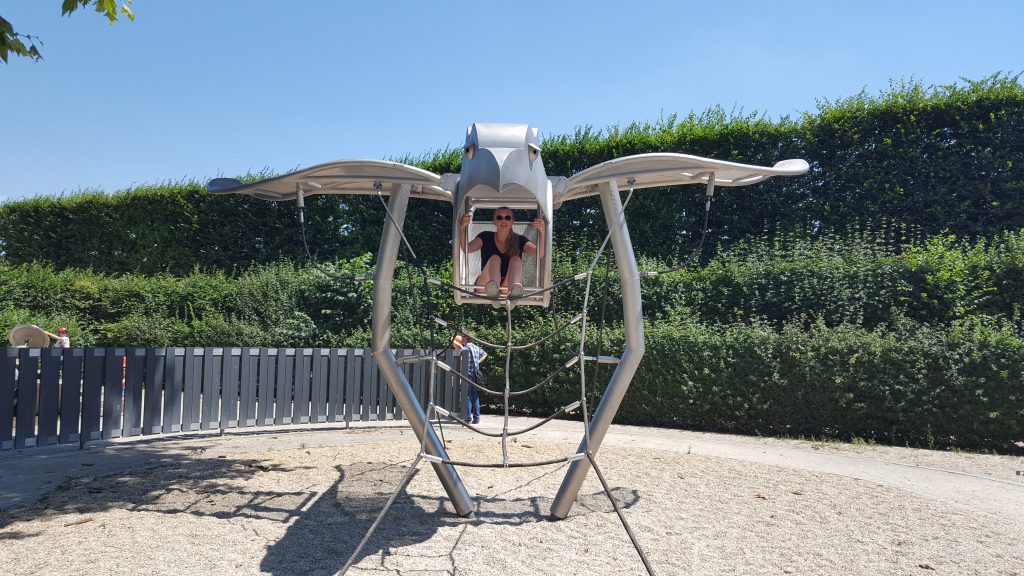
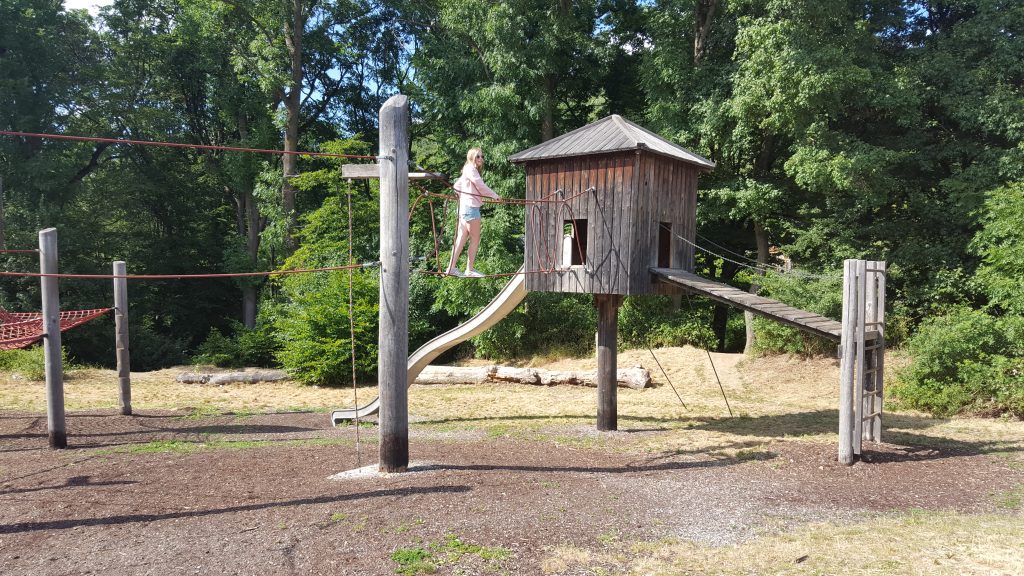
4) The Danube is the city’s playground, especially on hot summer days. The canal that runs through the main part of the city is only a small slice of the action. Venture out the U1 line to Alte Donau (old Danube) or Donauinsel (Danube Island) for some local fun from swimming beaches and pools to boat rentals and water slides.
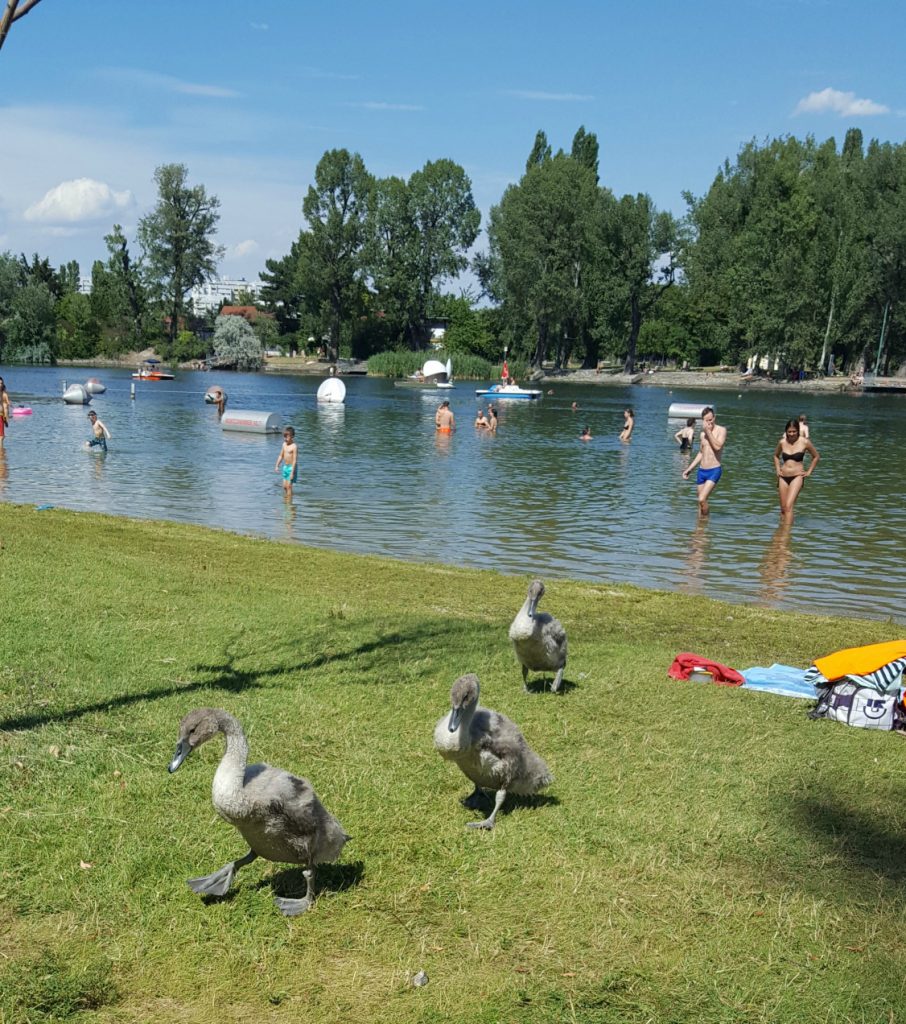
5) Dogs are nicht für Kinder (not for kids!). Dogs are everywhere in Vienna. They are well-behaved and adorable. They can ride the buses (with a little muzzle) and sit inside restaurants but they are not like American or British dogs. They are not interested in people other than their owners. And, their owners are generally not interested in having strange kids pet their dogs. How a non-human species could be so different in one country versus another seems a bit mysterious but it’s really the humans that are different. Humans simply don’t pay attention to other people’s dogs and this cultural behavior trains the dogs to ignore everyone but their owners. Just look, don’t pat.
6) Do you want an iced coffee while your child takes an afternoon nap? Good luck! You can get an IceKafe nearly everywhere. IceKafe is room temperature coffee with a scoop of vanilla ice cream (Eis) and maybe whipped cream and garnish. But, I often want to enjoy an unsweetened, cold coffee. Austrian friends have explained that this is “Iced Coffee” – a nearly indistinguishable difference that challenges even native German speakers – which should be coffee with ice cubes. During a recent 3 week stay, I tried it about a half dozen times in broken German and only once got the drink I was hoping for once. The other times, I was able to avoid the ice cream but was given, for example, a shot of espresso with a full glass of sweetened, whole milk or room temperature black coffee. I have been told that some not-to-be-named fast food chains serve iced coffee American style but I decided just to enjoy the local specialty, a hot kafe mélange, a delicious Viennese-style coffee usually served on a lovely silver tray, and then cool down with the ubiquitous gelato instead.
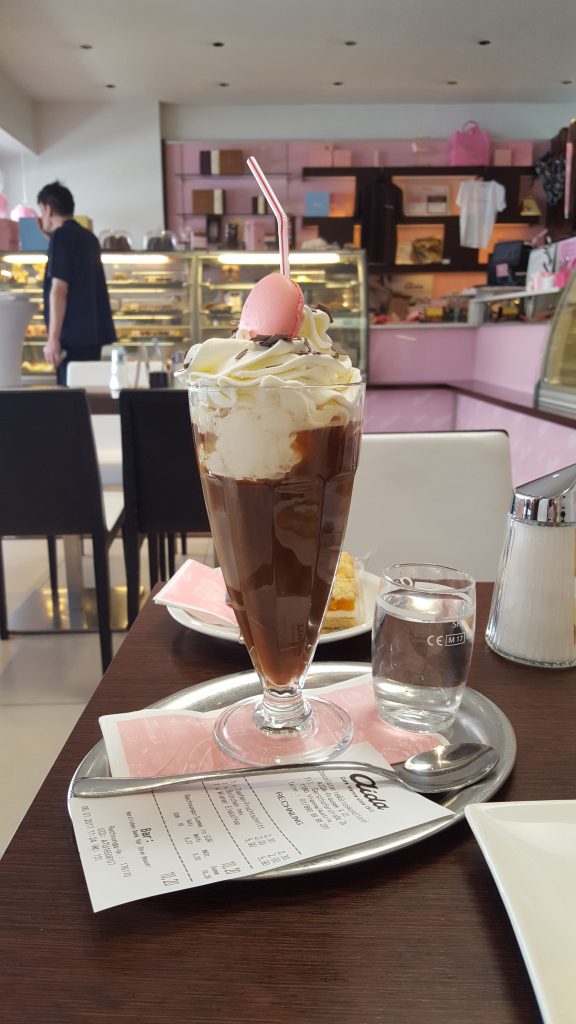
7) It’s always hard to figure out tipping in a new country but Austria is particularly tricky for me. The tip should range from 1-5 Euros and is calculated by rounding up to about 10%. The math is easy enough right? But wait, you have to do it fast, without prompting, verbally, and in German! (Ja, most servers can speak enough English to help you out but this article is about acting like a local so you are likely the type of traveler who is trying to speak only the local language). When you are ready to pay, you let your server know and they show up with a wallet full of bills and coins and often, but not always, a machine for paying by credit card. They may ask you what you ordered and calculate the total with a pen and paper (awesome!) or they may simply tell you the total. When you pass them the card or cash, you simply state how much you would like to pay, including tip. It goes like this (translated into English):
You – ‘Pay please’
Server – [some calculations or questions] ’Fifteen twenty-two’ (meaning 15 Euros and 22 cents)
You – [panicking a little, thinking fast, and handing over some cash or a card] ‘Seventeen’ (meaning that you intend to pay 17 Euros including the tip)
Server – [Runs the card or makes change] ‘Thank you’
Even after months in Austria, I sometimes forget to tell my server to round up fast enough and the efficient server gets no tip. This is primarily a problem when paying with a credit card since it is more difficult to correct after the fact. In tourist restaurants, your server will be likely be wise enough to ask if you would like to leave a tip. Again, just round up to about 10% and state the total.

